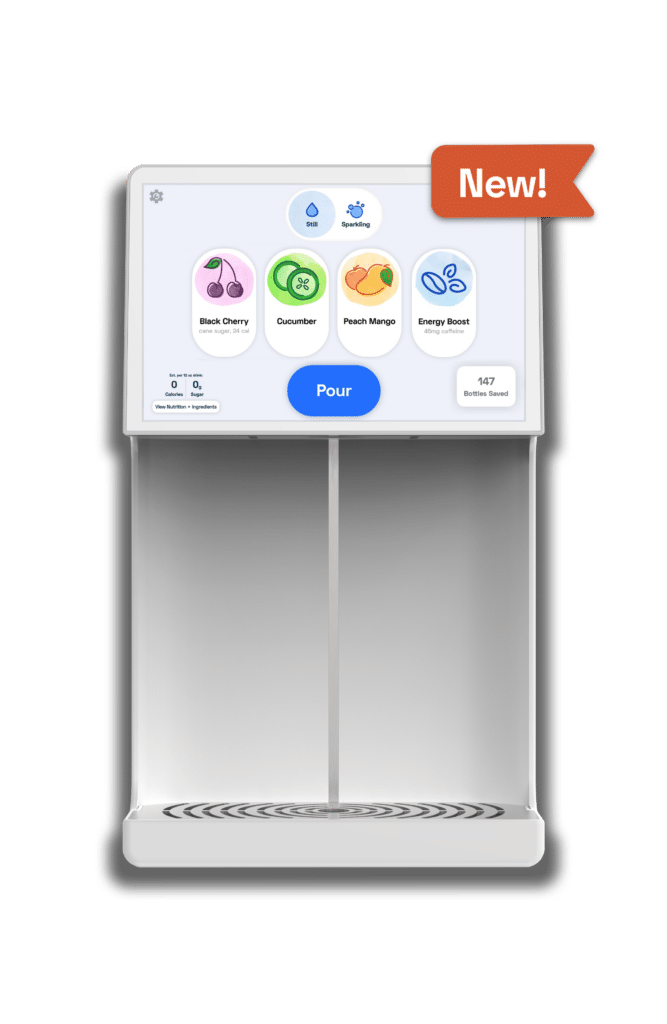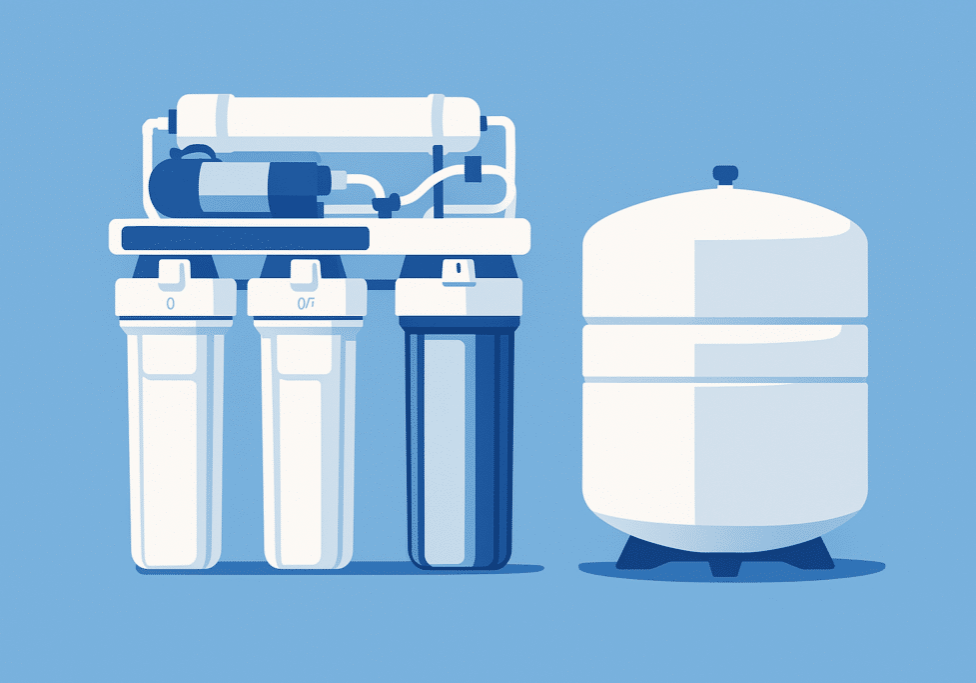Last updated March 25, 2025.
Yes, reverse osmosis filtration systems are extremely effective at removing microplastics from water when operating correctly and maintained frequently.
A 2019 study showed reverse osmosis was able to remove 99.9% of microplastics and nanoplastics from tap water.
Why? The pore size on reverse osmosis membranes is as small as 0.0001 microns. For context, a micron is one-millionth of a meter. That means, at one ten-billionth of a meter, the pores of a reverse osmosis system are miniscule enough to filter out particles 700,000 times smaller than the diameter of an average human hair. That covers not only the vast majority of microplastics, but also a decent portion of nanoplastics.
But be aware. There’s more to the reverse osmosis and microplastics story.
Recent research has raised concerns that under certain conditions, reverse osmosis may actually introduce—not remove—microplastics into the water as it passes through the system.

As reverse osmosis systems age, their filtration performance may decline. A 2023 review published in Water Science & Technology noted that degraded or aging polymer-based membranes can become a source of microplastic particles themselves. Similarly, a study in Chemosphere highlights that prolonged use and membrane fouling can lead to breakdown of the reverse osmosis membrane materials, releasing tiny fragments into the water. Membrane type, age, and maintenance all play a role.
This is why some setups combine reverse osmosis with other filtration methods—such as carbon, UV, and sediment filtration—to extend membrane life and improve overall performance. It’s also why regular maintenance of your filtration system is essential.
While more research is ongoing, rest assured, reverse osmosis is still expected to remove significantly more microplastics than it might contribute to your tap water.
Microplastics and your health: What you need to know
Truth is, you’re better of dealing with the microplastics in your tap water than trying to get around it with bottled water. Microplastic particles have been detected in 93% of bottled water samples. What’s the issue with being exposed to these particles in the beverages you drink?

- Ingestion and absorption in all the wrong places. Studies show microplastics can enter the bloodstream, organs, and even placental tissue. They are even absorbed into your brain. These are not places plastics should be.
- Endocrine disruption from microplastic exposure. Some plastics contain chemicals like BPA and phthalates, which may interfere with hormone function.
- Greater toxicity the further plastic particles break down. As plastics break down further, their surface area increases, making it easier for them to release harmful chemicals or interact with cells in damaging ways.
The science of reverse osmosis filtration
Reverse osmosis works by pushing water through a semi-permeable membrane with pores small enough to allow water molecules through while blocking nearly all other substances. It’s one of the best solutions out there for obtaining clean drinking water. The process removes is highly effective at removing:
- BPA
- PFAS
- Fluoride
- Heavy metals such as lead, arsenic, and mercury
- Pesticides and volatile organic compounds (VOCs)
- Bacteria, viruses, and parasites
- Microplastics and nanoplastics
This type of filtration is commonly used in industrial settings, laboratories, or places where water sources are severely compromised by pollution or outdated infrastructure. In these cases, the high level of purification reverse osmosis provides can be essential for protecting health.
The downsides of reverse osmosis (it doesn’t have to do with filtering microplastics)
Reverse osmosis may deliver impressively pure water, but that level of filtration doesn’t come without cost. From environmental concerns to practicality issues, RO systems carry trade-offs that make them less suitable for everyday use, especially in high-traffic or sustainability-focused settings.
1. Waste water
One of the biggest drawbacks of reverse osmosis is how much water it wastes. For every gallon of filtered water produced, an RO system can flush out 5 to 6 gallons as brine. That means the system sends significantly more water down the drain than it delivers for drinking.
In places where water is scarce, or conservation is a top priority, this inefficiency poses a serious problem. The environmental toll adds up quickly, particularly when used in homes, offices, or facilities that consume large volumes of water daily.
2. Energy and maintenance costs
RO systems don’t just waste water but also require energy. These systems rely on high water pressure to force water through a tightly woven membrane. That pressure often requires electricity or mechanical boosters, increasing both energy consumption and carbon footprint.
3. Strips out essential minerals
Reverse osmosis filtration systems don’t just remove the bad. They strip away beneficial minerals and trace elements as well. That’s calcium, magnesium, potassium, sodium, phosphorus, iodine, zinc—the list goes on. These minerals are essential for various functions in the body from bone health to nerve signaling.
Many RO systems try to correct this by adding remineralization filters, but these come with their own set of challenges, including added complexity, inconsistent mineral balance, and extra cost.
Purify your tap water without the waste
Making an informed choice for hydration
Clean drinking water is essential, but how you achieve it matters just as much as the result. While reverse osmosis is highly effective, it comes with environmental and practical drawbacks that make it less suitable for everyday use—especially in workplaces or sustainability-focused spaces.
Bevi’s carbon filtration offers a smarter alternative. It removes the contaminants that matter most, retains essential minerals, and avoids the waste and complexity of RO systems. The result is hydration that supports both people and the planet.
Here’s what to remember when weighing your options:
- Reverse osmosis can remove microplastics and other contaminants, but often at a significant environmental and operational cost.
- RO systems waste water, strip away beneficial minerals, and require more energy and maintenance.
- Bevi’s carbon filtration provides clean, great-tasting water without sacrificing sustainability or simplicity.
- For most offices and everyday environments, carbon filtration is the better long-term choice.






